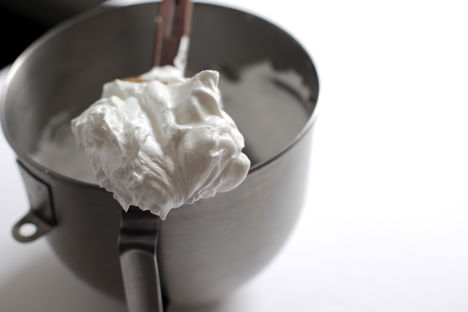Probably the least used of the three types of meringue, Swiss is actually the most stable. The protein structure of the egg white traps the air bubbles when it is whisked and the sugar serves to stabilise this (making it taste delicious in the process). Although it is possible to make Swiss meringue without a thermometer it is better to be precise. Swiss meringue can be stored in the fridge for up to 24 hours without weeping (when a pool of liquid begins to appear), a common issue with Italian meringue.
Metric
Imperial
- 4 large eggs, whites only
- 200g of caster sugar
- 1 pinch of salt
Variations
As it is so stable, Swiss meringue can easily be flavoured. Once the meringue is made, fold in vanilla essence, a little melted chocolate, puréed fruit, ground nuts or coffee, the options are endless.
You can of course use a variety of food colourings too for bold, bright results.
Serving suggestions
Swiss meringue is most commonly used to make dense, glossy buttercream frosting for cake, but can also be used for pavlovas and to top pies, such as lemon meringue pie.
Get in touch
Please sign in or register to send a comment to Great British Chefs.



